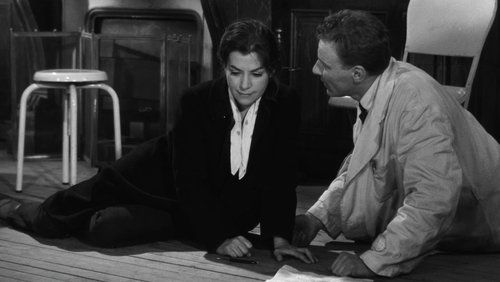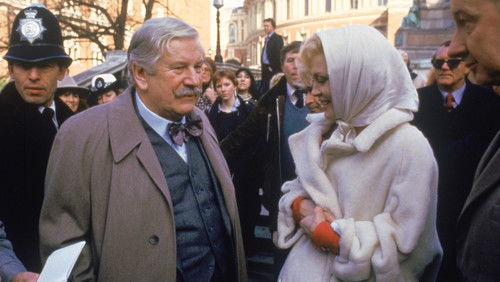Mission to Mars (2000)
62KMission to Mars: Directed by Brian De Palma. With Gary Sinise, Tim Robbins, Don Cheadle, Connie Nielsen. When the first manned mission to Mars meets with a catastrophic and mysterious disaster after reporting an unidentified structure, a rescue mission is launched to investigate the tragedy and bring back any survivors.
“Throughout his career, Brian De Palmau0026#39;s sensibilities have been at odds with mainstream audiences. Heu0026#39;s a trickster and a formalist, and those looking for realism and carefully sketched characters are often left confused by his constant homages and emphasis on technique. u003cbr/u003eu003cbr/u003eu0026quot;Mission to Marsu0026quot; introduces its playful intentions with its very first shot. A toy rocket, accompanied by carnival music, shoots up into the air and explodes. De Palma is here to play with his toys. The very next scene is an overly elaborate long-take in which all the filmu0026#39;s characters, their loves and losses, are introduced. u003cbr/u003eu003cbr/u003eAs a formalist, De Palma often calls attention to the artificiality of art. Here he has two astronauts holding video cameras as a CGI beast veers toward them. We focus on Don Cheadleu0026#39;s eyes as he watches these two film-makers, the word u0026quot;syntheticu0026quot; stencilled in bold letters behind him. This whole action scene is fake, created for the audience. De Palma wants you to focus not on story, but the design and look of the thing. Likewise, the aliens at the end of the film are themselves artists whou0026#39;ve designed man. As such, they demonstrate this knowledge to their audience (the astronauts) with a u0026quot;filmu0026quot;. u003cbr/u003eu003cbr/u003eDe Palma once said that space travel and scientific conquest are the only things that he can generate genuine optimism for, and one feels this in u0026quot;Mission to Marsu0026quot;. The film has an overwhelming sense of earnestness. De Palma characters have never seemed so pure, optimistic, good natured and filled with humanity. Thereu0026#39;s no cynicism or bitterness here. Upon first viewing I found this all very cheesy, but now, coupled with Ennio Moriconeu0026#39;s sweeping and romantic score, I find the filmu0026#39;s broad brushstrokes very moving. u003cbr/u003eu003cbr/u003eu0026quot;Missionu0026quot; also continues De Palmau0026#39;s trend of turning classic films on their side. Heu0026#39;s done this to Hitch, Fellini, Anotonioni and Hawks. Now he does it to Kubrick (one scene literally has u0026quot;2001: A Space Odysseyu0026#39;su0026quot; monolith on itu0026#39;s side). u003cbr/u003eu003cbr/u003eDoes this make De Palma a hack? No, It makes him a giddy delight if youu0026#39;re a film fan. u0026quot;Mission to Marsu0026quot; is a bit more straightforward than u0026quot;2001,u0026quot; itu0026#39;s a little friendlier, but itu0026#39;s practically the same movie. Just replace the monolith with the u0026quot;Mars face,u0026quot; and drop Hal. Both filmsu0026#39; spaceships also look alike, and the white room used in the climactic scene strongly resembles the room at the end of u0026quot;2001.u0026quot; And of course, where Kubrick gave us spaceships dancing the waltz, De Palma gives us astronauts dancing in zero gravity.u003cbr/u003eu003cbr/u003eBut De Palma doesnu0026#39;t stop at Kubrick. His film has a character named Luke who spends one scene talking about a mysterious u0026quot;forceu0026quot; (Star Wars), a spaceship commanded by a man named Jim (Star Trek), and many overt reference to u0026quot;Flash Gordonu0026quot;, u0026quot;Robinson Crusoeu0026quot; and u0026quot;Teasure Islandu0026quot;. Noticing that his tale is a virtual rehash of u0026quot;The Abyssu0026quot;, De Palma also tips his hat to James Cameron by having Gary Sinese become submerged in oxygenated water (like Ed Harriss) during the filmu0026#39;s finale. And of course both films have a CGI tentacle. Cameron gives us water, De Palma gives us sand.u003cbr/u003eu003cbr/u003eEverything De Palma touches has been covered before. He acknowledges this. But itu0026#39;s how he touches, thatu0026#39;s magical. His entire film is elegant and fluid. Every shot is just a little bit wider or closer than usual. His camera pans and tracks with robotic precision, dancing, points of views shifting, perspectives changing. Thereu0026#39;s a perfection in his form. Every shot is beautifully precise. u003cbr/u003eu003cbr/u003eBut what about the trite story, critics say? Yes, the story is silly, stupid even, but itu0026#39;s all told with such an earnest u0026quot;awww shucksu0026quot; feeling that it sucks you in. And besides, De Palma is never about story. Compare u0026quot;Femme Fataleu0026quot; to u0026quot;Double Indemnityu0026quot;. u0026quot;Compare Vertigou0026quot; to u0026quot;Body Doubleu0026quot; or u0026quot;Obsessionu0026quot;. He takes the core ideas of all these films and multiplies them by ten. You want u0026quot;Double Indemnityu0026quot;? De Palma gives you triple indemnity. You want Hitchcockian voyeurs? Hell, De Plamau0026#39;s voyeurs are watching voyeurs who themselves are being watched by even more voyeurs. You want illicit Hitchcockian affairs? Screw that. De Palma gives you Vertigo with incest. You want a slow-mo Hitchcock knife stab? Hell, De Palma kills you with a power drill and chainsaw. u003cbr/u003eu003cbr/u003eNothing in De Palmau0026#39;s cinema is real. He knows that all films are about other films. Everything heu0026#39;s done has been done before. This is what all formalists (Coens, Tarantino, Leone) are about. Theyu0026#39;re interested in the act of watching and how we catalogue what we see. u003cbr/u003eu003cbr/u003eAfter 4 viewings, the only flaw I see in u0026quot;Mission to Marsu0026quot; is the filmu0026#39;s unimaginative ending. Someone concerned with style and superficial form really should design a more imaginative ending. De Palmau0026#39;s silly alien hologram feels hokey, though Morriconeu0026#39;s score does lend it an emotional sweep.u003cbr/u003eu003cbr/u003eBut this fault, I think, can be blamed on Touchstone. The studios had an 80 million dollar budget on the line, and werenu0026#39;t happy with where the film was going. They wrongly thought they had another Appolo 13/Gary Sinese rescue movie on their hands. And so looking to save cash, they chopped the budget and gave De Palma several months less to shoot the final act. Hence the film goes nowhere after the EVA sequence. But this sort of studio meddling is typical with De Palma (Snake Eyes, Mission Impossible, Casualties, Dahlia, Obsession, Bonfire etc were all taken away at some point). u003cbr/u003eu003cbr/u003e8.5/10- The film has aged well. Gorgeous visuals, beautiful music and an affecting sense of optimism. The only flaw is the last act, which still works thanks to Morriconeu0026#39;s score and an emotional flashback montage. Requires several viewings.”









